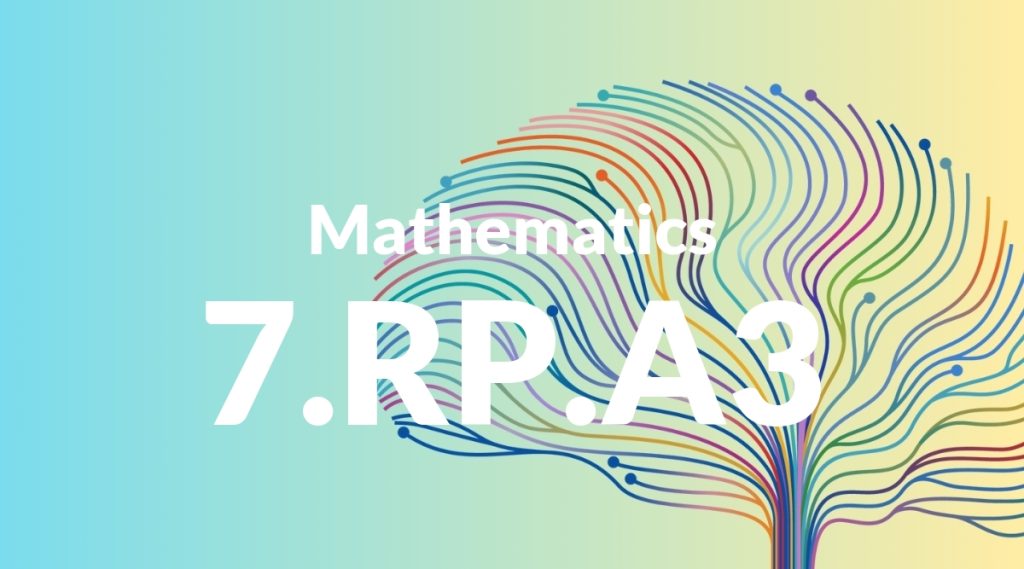Standard: 7.RP.A3 – Use proportional relationships to solve multistep ratio and percent problems. Examples: simple interest, tax, markups and markdowns, gratuities and commissions, fees, percent increase and decrease, percent error.
Grade level: Grade 7
Subject: Mathematics
Domain: Ratios & Proportional Relationships
Teacher Overview
This standard focuses on using proportional relationships to solve various real-world problems involving ratios and percentages. It is crucial for students to understand these concepts as they form the foundation for more advanced mathematical topics and everyday financial literacy. Students should be comfortable with basic arithmetic, fractions, decimals, and simple ratios. They should also have experience with solving single-step problems involving these concepts.
After mastering this standard, students will be able to tackle more complex algebraic problems and understand linear equations and functions in greater depth.
Common Misconception 1
A common misconception is that percent increase and percent decrease are calculated the same way. This is incorrect because the base value changes depending on whether you are increasing or decreasing.
Intervention 1
To address this misconception, use visual aids such as bar models or number lines to illustrate the difference. Provide real-world examples where students calculate both percent increase and decrease to see the distinction.
Common Misconception 2
Another misconception is that proportional relationships always result in whole numbers. This is not true, as proportions can result in fractions or decimals.
Intervention 2
Give students practice problems that result in non-whole numbers. Discuss the importance of precision and accuracy, especially in real-world contexts such as finance and measurement.
Prerequisite Knowledge
Students should have a foundational understanding of basic arithmetic operations, fractions, decimals, and simple ratios before tackling this standard.
Subsequent Knowledge
After mastering this standard, students will be able to apply their understanding of proportional relationships to more complex algebraic problems and real-world scenarios involving linear equations and functions.
Instructional Activities
- Create a shopping scenario where students calculate total cost including tax and discounts.
- Use a restaurant menu to practice calculating tips and total bills.
- Simulate a sales job where students calculate commissions based on sales made.
- Conduct a simple interest calculation activity for different savings accounts.




